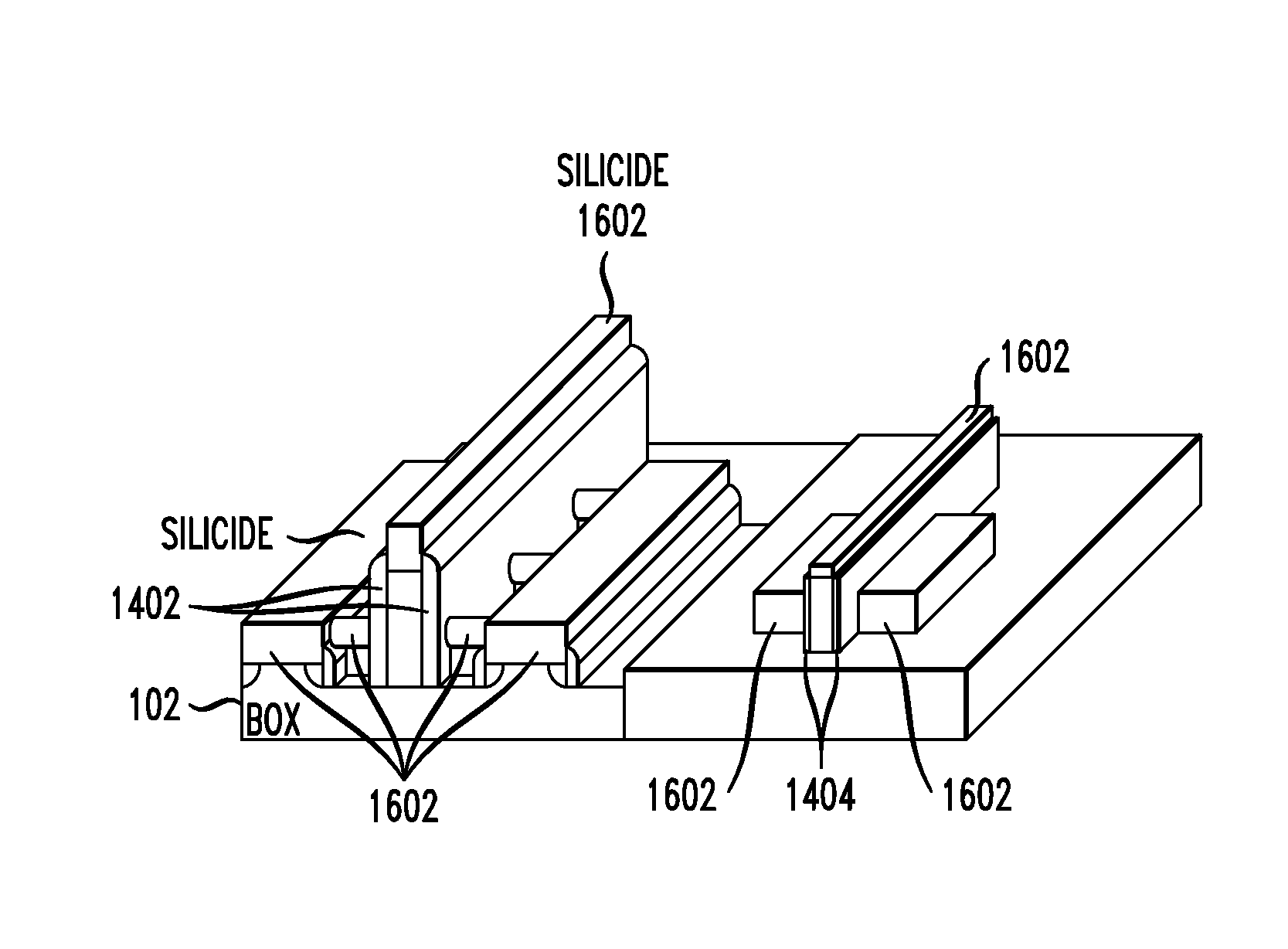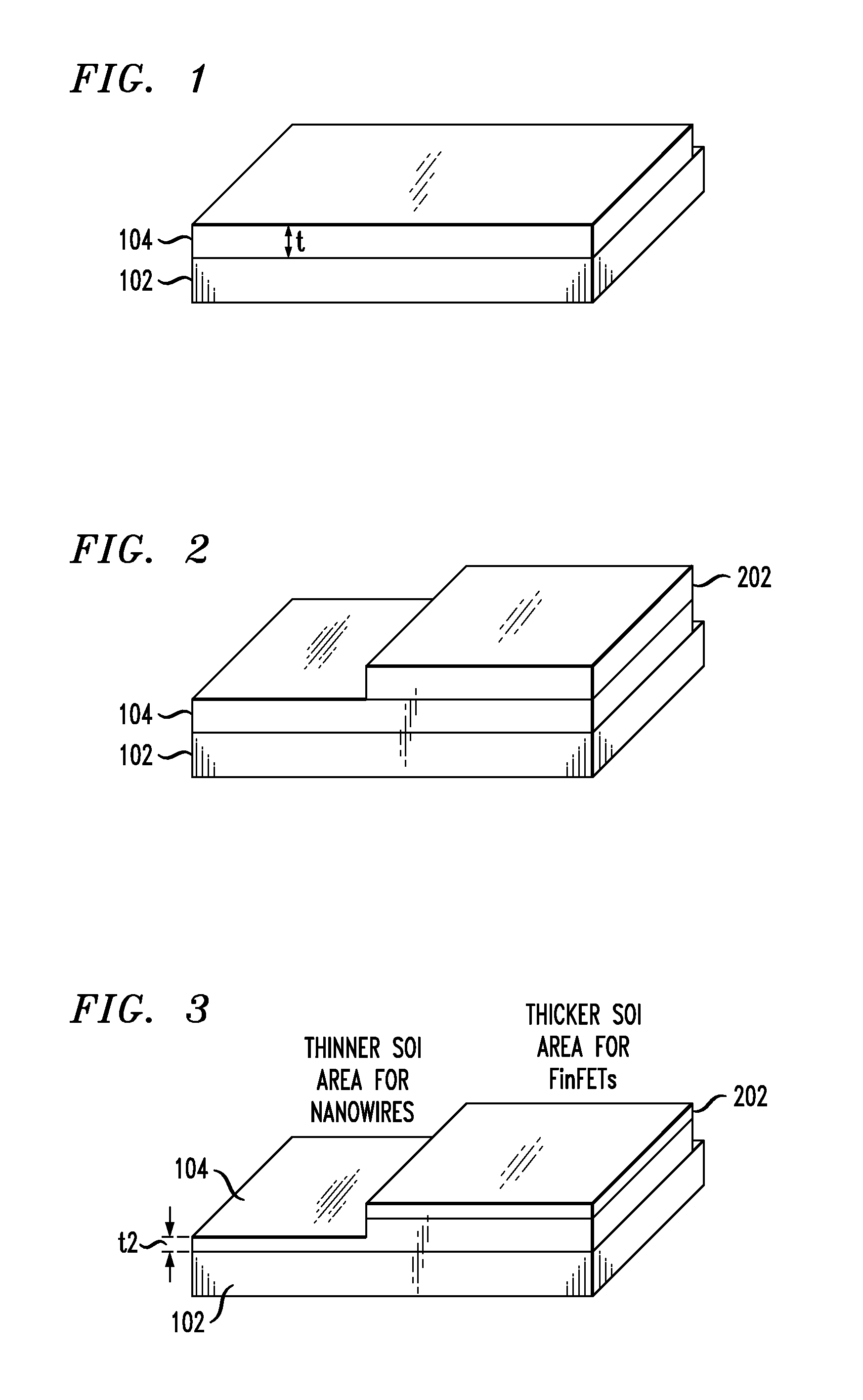Nanowire FET and finFET hybrid technology
a hybrid technology and nanowire technology, applied in the field of integrated circuits, can solve the problems of electrostatics and mobility degradation in cmos devices, and the scaling brings about problems that cannot be overcome, and the key technical challenges are still to be overcom
- Summary
- Abstract
- Description
- Claims
- Application Information
AI Technical Summary
Benefits of technology
Problems solved by technology
Method used
Image
Examples
Embodiment Construction
[0026]FIGS. 1-16 are diagrams illustrating an exemplary methodology for fabricating a complementary metal-oxide semiconductor (CMOS) circuit. The CMOS circuit will include an n-type field-effect transistor (NFET) device and a p-type FET (PFET) device. In the example now provided, the NFET device will employ a nanowire FET architecture and the PFET will employ a finFET architecture.
[0027]The fabrication process begins with a semiconductor-on-insulator (SOI) wafer. See FIG. 1. An SOI wafer typically includes a layer of a semiconductor material (also commonly referred to as a semiconductor-on-insulator layer or SOI layer) separated from a substrate by an insulator. When the insulator is an oxide (e.g., silicon dioxide (SiO2)), it is commonly referred to as a buried oxide, or BOX. According to the present techniques, the SOI layer will serve as an active layer of the device in which the nanowires and fins will be patterned. Thus, the SOI layer will be referred to herein as an active lay...
PUM
 Login to View More
Login to View More Abstract
Description
Claims
Application Information
 Login to View More
Login to View More - R&D
- Intellectual Property
- Life Sciences
- Materials
- Tech Scout
- Unparalleled Data Quality
- Higher Quality Content
- 60% Fewer Hallucinations
Browse by: Latest US Patents, China's latest patents, Technical Efficacy Thesaurus, Application Domain, Technology Topic, Popular Technical Reports.
© 2025 PatSnap. All rights reserved.Legal|Privacy policy|Modern Slavery Act Transparency Statement|Sitemap|About US| Contact US: help@patsnap.com



